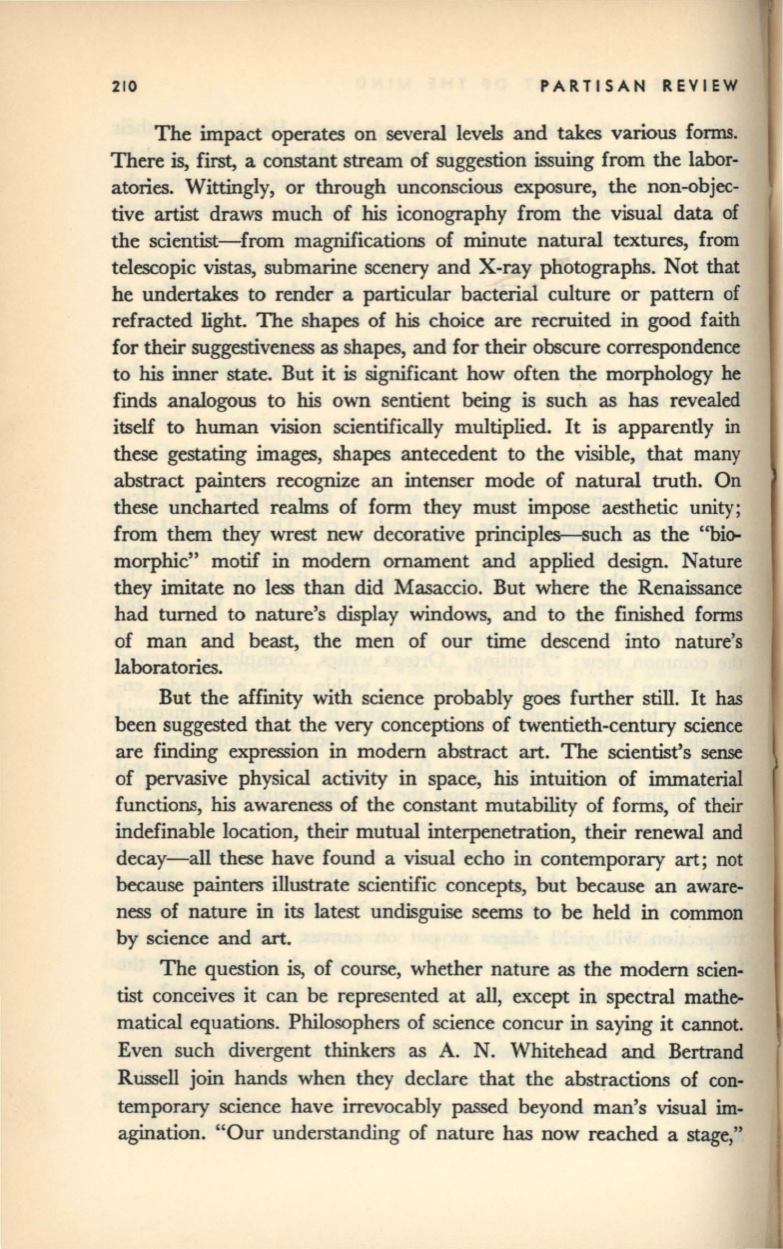
210
PARTISAN REVIEW
The impact operates on several levels and takes various forms.
There is, first, a constant stream of suggestion issuing from the labor–
atories. Wittingly, or through unconscious exposure, the non-objec–
tive artist draws much of his iconography from the visual data of
the scientist-from magnifications of minute natural textures, from
telescopic vistas, submarine scenery and X-ray photographs. Not that
he undertakes to render a particular bacterial culture or pattern of
refracted light. The shapes of his choice are recruited in good faith
for their suggestiveness as shapes, and for their obscure correspondence
to his inner state. But it is significant how often the morphology he
finds analogous to his own sentient being is such as has revealed
itself to human vision scientifically multiplied.
It
is apparently
in
these gestating images, shapes antecedent to the visible, that many
abstract painters recognize an intenser mode of natural truth. On
these uncharted realms of form they must impose aesthetic unity;
from them they wrest new decorative principles--such as the "bio–
morphic" motif in modem ornament and applied design. Nature
they imitate no Ie&'> than did Masaccio. But where the Renaissance
had turned to nature's display windows, and to the finished forms
of man and beast, the men of our time descend into nature's
laboratories.
But the affinity with science probably goes further still. It
has
been suggested that the very conceptions of twentieth-century science
are finding expression in modem abstract art. The scientist's sense
of pervasive physical activity in space, his intuition of immaterial
functions, his awareness of the constant mutability of forms, of their
indefinable location, their mutual interpenetration, their renewal and
decay-all these have found a visual echo in contemporary art; not
because painters illustrate scientific concepts, but because an aware–
ness of nature in its latest undisguise seems to be held in common
by science and art.
The question is, of course, whether nature as the modem scien–
tist conceives it can be represented at all, except in spectral mathe–
matical equations. Philosophers of science concur in saying it cannot.
Even such divergent thinkers as
A.
N. Whitehead and Bertrand
Russell join hands when they declare that the abstractions of con–
temporary science have irrevocably passed beyond man's visual
im–
agination. "Our understanding of nature has now reached a stage,"


